http://www.rhci-online.net/radiogram/radiogram.htm

RSID: <<2020-12-06T01:30Z
MFSK-64 @
5960000+1500>>
Little Richard was born Richard Wayne Penniman on December 5, 1932.
He died in May of 2020.
Sending Pic:203x203;

bit.ly/39wOAPH
Please report your decode to
themightykbc@gmail.com


RSID: <<2020-12-04T00:31Z
MFSK-32 @
9265000+1500>>
Welcome to program 181 of Shortwave Radiogram.
I'm Kim Andrew Elliott in Arlington, Virginia USA.
Here is the lineup for today's program, in MFSK modes as noted:
1:42 MFSK32: Program preview (now)
2:45 Arecibo Radio Observatory collapses*
8:45 MFSK64: Electronic waste on the decline, study finds
12:34 This week's images*
28:25 MFSK32: Closing announcements
* with image(s)
Please send reception reports to
radiogram@verizon.net
And visit http://swradiogram.net
Twitter:
@SWRadiogram
From Deutsche Welle:
Puerto Rico: Massive Arecibo Observatory telescope collapses
The structure's demise was sudden, though it has been
deteriorating for several months. The telescope's collapse
brings to an end 57 years of astronomical work.
December 1, 2020
A giant telescope at Puerto Rico's Arecibo Observatory that had
been deteriorating since August collapsed on Tuesday, officials
said.
After making astronomical discoveries for well over half a
century, the radio telescope's 900-ton receiver platform,
suspended by cables 450 feet (137 meters) above a 1,000-foot-wide
(305 meters) bowl-shaped reflector dish, fell on Tuesday morning.
The National Science Foundation (NSF) tweeted: "No injuries were
reported. NSF is working with stakeholders to assess the
situation. Our top priority is maintaining safety."
The NSF later released a statement saying: "Local authorities
will keep the area cordoned off as engineers work to assess the
stability of the observatory's other structures."
Vulnerable but crash still stuns
The structure was already looking vulnerable after an auxiliary
cable snapped in August, causing a 100-foot gash on the
1,000-foot-wide (305-meter-wide) dish.
A main cable then broke in early November, prompting the NSF to
announce the structure was beyond repair and would have to be
demolished.
Nevertheless, Tuesday's crash stunned many scientists who had
relied on what was, until 2016, the world's largest radio
telescope. It had been in operation for 57 years studying distant
planets, finding potentially hazardous asteroids and searching
for potential signs of extraterrestrial life.
"It sounded like a rumble. I knew exactly what it was,'' said
Jonathan Friedman, who worked for 26 years as a senior research
associate at the observatory and still lives nearby. "I was
screaming. Personally, I was out of control.... I don't have
words to express it. It's a very deep, terrible feeling."
Angel Vazquez, the telescope's director of operations, told news
agency The Associated Press. "It was a snowball effect," he said.
"There was no way to stop it.... It was too much for the old girl
to take."
The telescope also gained fame after being used in the 1995 James
Bond film "GoldenEye" starring Pierce Brosnan.
https://www.dw.com/en/puerto-rico-massive-arecibo-observatory-telescope-collapses/a-55790972
See also:
https://newatlas.com/space/arecibo-radio-telescope-collapses/
https://www.space.com/arecibo-observatory-radio-telescope-collapse-photos
Image: Fallen support structures on the dish of the Arecibo Radio
Observatory ...
Sending Pic:198x163C;
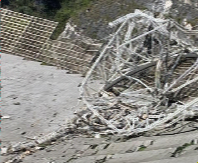
Shortwave Radiogram changes to MFSK64 ...
RSID: <<2020-12-04T00:39Z
MFSK-64 @
9265000+1500>>
This is Shortwave Radiogram in MFSK64
Please send your reception report to
radiogram@verizon.net
From the Yale School of the Environment
Electronic waste on the decline, new study finds
Geoffrey Giller
December 2, 2020
A new study, led by a researcher at the Yale School of the
Environment's Center for Industrial Ecology and published
recently in the Journal of Industrial Ecology, has found that the
total mass of electronic waste generated by Americans has been
declining since 2015. In an age when most of us can't imagine
life without our digital devices, this surprising finding has
ramifications for both how we think about electronic waste's
future and for the laws and regulations regarding e-waste
recycling, according to the study's authors.
The biggest contributor to this decline is the disappearance of
the large, bulky cathode-ray tube (CRT) televisions and computer
monitors from American homes, says Callie Babbitt, a professor at
Rochester Institute of Technology's Golisano Institute for
Sustainability and one of the study's authors. Since about 2011,
CRT displays have been on the decline in the waste stream,
helping to lead the overall decline in total e-waste mass.
This decline in bulkier displays means that e-waste regulations
may have to be rethought, says Babbitt. "If you look at the state
laws that exist in many places for e-waste recycling, many of
them set their targets based on product mass," she says. As the
overall mass of e-waste declines, meeting those targets becomes
more difficult. Moreover, says Babbitt, the main goal of these
regulations had been to keep electronics with high levels of lead
and mercury out of landfills, where they can eventually leach
into the surrounding environment. But these days, a more
pertinent concern is how to recover elements like cobalt (used in
lithium-ion batteries) or indium (found in flat-panel displays).
These elements aren't as environmentally toxic; rather, they are
relatively scarce in the Earth's crust, so failing to recapture
them for reuse in new electronics is wasteful. "The e-waste
recycling system is somewhat backwards-looking," says Babbitt; it
has struggled to keep pace with the changing nature of
electronics.
Shahana Althaf, the lead author on the study and a postdoctoral
associate at the Yale Center for Industrial Ecology, notes that a
shift in e-waste recycling to capture more of these critical
elements could also help the United States secure its supply of
the ingredients required for manufacturing electronic devices.
Geopolitical uncertainties can pose threats to what Althaf terms
"mineral security" for the U.S. "People are slowly realizing...
the need to ensure domestic supply," she says. Rather than mining
the ore from the Earth's crust, capturing the elements from
electronic waste could instead provide these crucial elements. In
addition to mineral security, this would reduce the environmental
destruction that traditional mining often entails.
The sheer number of electronic devices entering the waste stream
is also leveling off or slightly declining, Babbitt and Althaf
say. This is due to something that Babbitt terms 'convergence':
gaming consoles, for example, can act as DVD players; smartphones
are also cameras and video recorders. In the past, says Babbitt,
people needed separate devices for each of those applications.
To amass the data necessary for their study, the authors used
material flow analysis, a technique for quantifying the resources
going into or out of a system. They focused on twenty categories
of digital devices—including computers, smartphones, digital
cameras, and audio-visual equipment—and disassembled dozens of
products in a lab in order to determine the relative content of
various important elements, in addition to relying on previously
published data.
"This is a very important finding that cuts against the widely
held idea that electronic waste is the 'fastest growing waste
stream,'" says Reid Lifset, the editor-in-chief of the Yale-based
Journal of Industrial Ecology. "It shifts our understanding of
the problem with e-waste," he says.
In the United States, e-waste recycling is regulated at the state
level, and only half the states have e-waste recycling laws. That
leads to a patchwork of regulations which makes it harder for
companies to navigate if they wanted to make their products
easier to recycle, says Babbitt. A more holistic, federal
approach could help increase the overall capture of rare
elements. Ultimately, we should "see waste as a resource," says
Althaf: an opportunity, rather than a problem.
https://environment.yale.edu/news/article/electronic-waste-on-the-decline-new-study-finds/
This is Shortwave Radiogram in MFSK64
Please send your reception report to
radiogram@verizon.net
This week's images ...
A woman walks in a park during snowfall in Sofia, Bulgaria.
https://bit.ly/3oiJcDT ...
Sending Pic:299x250;
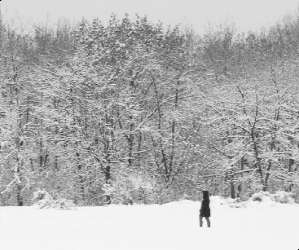
A female coeligena helianthea hummingbird in Bogota, Colombia.
https://bit.ly/3oiJcDT ...
Sending Pic:207x140C;

The borough of Jim Thorpe, Pennsylvanioa, ready for Christmas.
https://bit.ly/3lxO46f ...
Sending Pic:200x169C;

A man holds an umbrella at the BOH Sungai Palas Tea Centre in the
Cameron Highlands in Malaysia’s Pahang state.
https://bit.ly/3qoFBGs ...
Sending Pic:203x164C;

Saks Fifth Avenue in New York City is lit up with its Christmas
display.
https://bit.ly/36zGsMD ...
Sending Pic:208x138C;

A view across Dunsapie Loch in Holyrood Park in Edinburgh.
https://bit.ly/3mNZQv3 ...
Sending Pic:312x153;
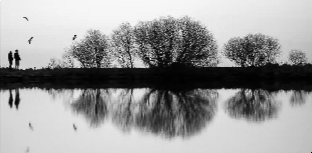
A view of a bridge through a bridge on the Dava Way, northern
Scotland. https://bbc.in/2VwwWDw ...
Sending Pic:179x200C;
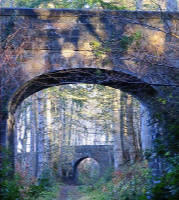
A sunset in the Scottish Borders.
https://bbc.in/2VwwWDw ...
Sending Pic:201x136C;
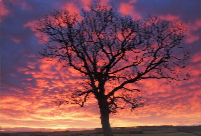
Our painting of the week is "The Last Leaf" by Gladys Folkers.
https://bit.ly/2JHy1pv ...
Sending Pic:167x209C;

Shortwave Radiogram returns to MFSK32 ...
RSID: <<2020-12-04T00:58Z
MFSK-32 @
9265000+1500>>
This is Shortwave Radiogram in MFSK32 ...
Shortwave Radiogram is transmitted by:
WRMI, Radio Miami International, wrmi.net
and
WINB Shortwave, winb.com
Please send reception reports to
radiogram@verizon.net
And visit http://swradiogram.net
Twitter:
@SWRadiogram or
twitter.com/swradiogram
I'm Kim Elliott. Please join us for the next Shortwave
Radiogram.
http://www.rhci-online.net/radiogram/radiogram.htm
http://wiki.radioreference.com/index.php/Decoding_the_SW_Radiogram_Broadcasts
https://www.qsl.net/ve7vv/Files/Digital%20Modes.pdf

RSID: <<2020-12-02T21:48Z
MFSK-64 @
7780000+1500>>

This Is A Music Show #092
02 December 2020
2100-2200UTC Wednesday on 7780 kHz
0200-0300UTC Thursday on 5850 kHz
via WRMI, Okeechobee USA
***ALSO***
TIAExpressMS w/ Radio Northern Europe International
via Channel 292 in Germany, on 6070 kHz.
Broadcast various dates/times. Check the schedule here:
https://www.channel292.de/schedule-6070-khz/
https://rnei.org/
----------------------------------------
PLAYLIST
Robert Delgado - Grazing In The Grass
-----
Merry Clayton - Good Girls
The Sandpebbles - Stick By Me
Lloyd Parks - Ain't Too Proud To Beg
-----
Sloan - Same Old Flame
Zodiac - Flight Over El Dorado
Takeshi Terauchi + Blue Jeans - Ron Sen Qu (Chun Que)
-----
Jean-Michel Jarre - Zoolookologie
Ultravox - Alles Klar
-----
Jah Woosh (Mighty Cloud Band) - That Dub
-----
Autechre - DekDreScapB
-----
THIS DATA w/ Bert Kaempfert - Love Comes But Once
-----
The Orlons - Holiday Hill
----------------------------------------
*** TIAMS Top 25 of 2020 ***
Time to count down the best finds of the year!
Vote here for your favourite songs:
https://forms.gle/X7VzZvd9meKSLv8G9
Schedule:
Part 1:
Dec 23 2100 UTC (4pm Eastern) on 7780 kHz
Dec 24 0200 UTC (9pm Eastern, 6pm Pacific) on 5850 kHz
Part 2:
Dec 30 2100 UTC (4pm Eastern) on 7780 kHz
Dec 31 0200 UTC (9pm Eastern, 6pm Pacific) on 5850 kHz
Mark your calenders!
-----
Please send reception reports/comments:
thisisamusicshow@gmail.com
Follow TIAMS on Twitter:
www.twitter.com/ThisIsAMusicSho/
------
Thanks for listening!
--YOUR HOST--
EOM
RSID: <<2020-12-02T21:50Z
MFSK-64 @
7780000+1500>>
Sending Pic:300x300Cp4;
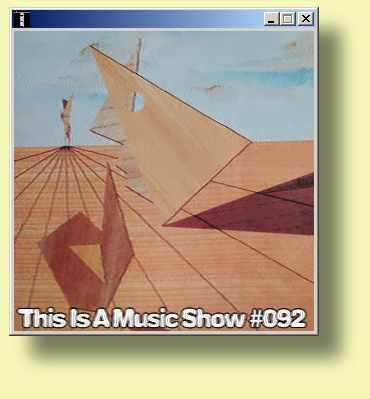
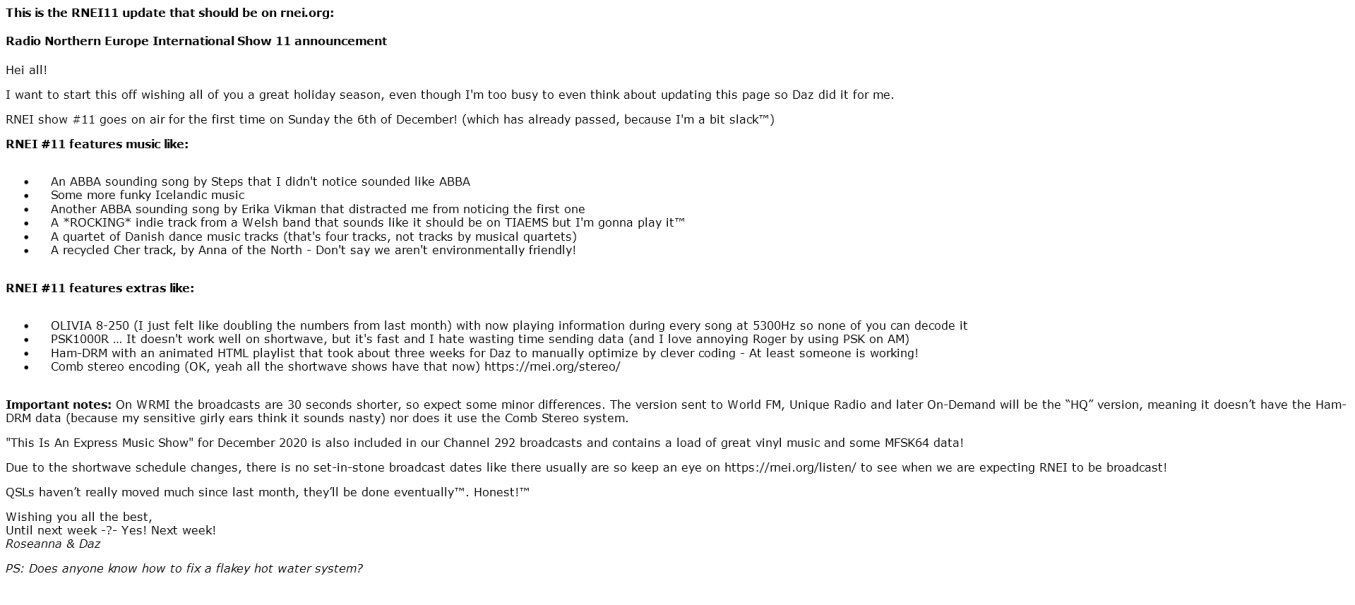
....
---- RNEI 11's playlist ---- |
|
|
|
|
| 1, Steps - Something in Your Eyes |
🇬🇧-🏴 |
This song is the latest from an English 90s pop dance group,
still making fun pop music decades after their debut! |
https://www.midomi.com/Track?trackID=100676602312363684&song=something-in-your-eyes |
https://youtu.be/P9xBayzbAFc |
| 2, BRÍET - Nær Þér |
🇮🇸 |
We bring you BRÍET's latest song. It has a similar vibe to
GDRN from last week and I love it! |
- - - |
https://youtu.be/5xmCZq5QelM |
| 3, Erika Vikman - Syntisten pöytä |
🇫🇮 |
Finland's Erika Vikman, a former Tango Dancer, invites us to
the table of sinners this month. With her strong vocals and an amazing ABBA-esque
backing track Syntisten pöytä jumped right into the Finnish top 30! |
https://www.midomi.com/Track?trackID=100909588581416756&song=syntisten-p%C3%B6yt%C3%A4 |
https://youtu.be/6aLb6vJ_TkI |
| 4, Adwaith - Lan Y Môr |
🇬🇧-🏴 |
Here's a treasure of an entry, Indie Rock band Adwaith's
latest song in Welsh! |
https://www.midomi.com/Track?trackID=100714554312638938&song=lan-y-mor |
https://youtu.be/X-Sbi4OenxY |
| 5, Re:Bond featuring Sanna and Serenad - Aldrig det |
🇸🇪 |
Something I heard on P4 Nästa, I found it quite a nice
change after the rock! |
- - - |
https://youtu.be/UO_5olDP3vo |
| 6, Anna of the North - Believe |
🇳🇴 |
This song is probably my favourite of the show. Anna of the
North (Last played in the very first RNEI show!) has covered Cher's Believe
with such a wonderful, chill and haunting vibe. I find it chillingly
beautiful! |
https://www.midomi.com/Track?trackID=100612596313003451&song=believe |
https://youtu.be/WFAjynm1Y1w?t=9 |
| ---- Danish Dance Music Mix ---- |
|
|
|
|
| 7, Kasper Nyemann - Du' Min (Le Boeuf Remix) |
🇩🇰 |
A catchy dance song sung in Danish with a nice happy vibe. |
https://www.midomi.com/Track?trackID=100464354620780796&song=du%27-min-le-boeuf-remix |
https://youtu.be/_0owxCL69Os |
| 8, LittGloss - I See Right Through To You (Sunrise Edit) |
🇩🇰 |
LittGloss gives us a slowed down dance banger with strong
vocals. |
https://www.midomi.com/Track?trackID=100101321174297482&song=i-see-right-through-to-you%5Bsunrise-edit%5D |
https://youtu.be/qNPdJKg5DVU |
| 9, Tvilling - Dum Dum Dum |
🇩🇰 |
Tvilling brings us back up in tempo with a solid drop in
their song Dum Dum Dum. |
https://www.midomi.com/Track?trackID=100157301364000887&song=dum-dum-dum |
https://youtu.be/w2gncd1XytM |
| 10, Boye & Sigvardt, Hazel - Confessions
+ PSK-1000R @ 1500 Hz [playlist]
|
🇩🇰 |
Hazel teases the listener about what she's been up to in
Boye & Sigvardt's well produced song Confessions. |
https://www.midomi.com/Track?trackID=100255804086569697&song=confessions |
https://youtu.be/yuTnv_lKgqU |
Our email is qsl@rnei.org.
Thank you for decoding,
Til vi møtes igjen,
Ha det!
.... |
|
|
|
|
Daz:
The December RNEI11 shortwave broadcast features an animated vector graphics
html playlist, sent using WinDRM.
The small data size allows the most robust QAM4 modulation to be used, and
allows the data to be sent in 2 passes for protection against QRM or fades.
Requirements:
Decoder: WinDRM or Easypal (either will work)
Decompressor: 7zip
Browser: Firefox, Edge, or Chrome/Vivaldi (possibly others IF they have GPU
acceleration for SVG graphics). Only Firefox is able to display both the
animations and emojis correctly.
The playlist will be supplied in three files, to suit various browser speeds:
Main file - All animations
Slower - Sun only, no clouds
Slowest - Animated text and RNEI logo only
Rendering animated SVG graphics requires GPU acceleration to get a decent
framerate.
Firefox on Windows 7 or 10, Edge on Windows 10, and Chrome/Vivaldi on Windows
8.1 were the only browsers tested that could display the animated content at a
reasonable frame rate (30 FPS or more). Other browsers and operating system
combinations tested were just too slow.
Chrome/Vivaldi may need "ignore-gpu-blocklist" to be manually enabled.
Firefox may need WebRender disabled if your hardware or OS can't support it.
Direct3D 11 mode works fine.
Firefox v83 has switched to the "WebRender" graphics engine. If WebRender can't
run on your system, it causes a slowdown in SVG animation (to perhaps 1 FPS or
less). If you have this issue, go into Firefox about:config and set "gfx.webrender.force-disabled"
to "true", and restart Firefox.
RNEI11 first airs at 1900UTC on Sunday December 6th on 6070kHz from Germany, and
0100UTC Thursday December 10th on 5850kHz WRMI. It is repeated weekly for the
rest of the month. Check transmitter timetables for more precise times and
dates.
The playlist is sent at the end of the program (about 29 minutes into the
6070kHz ch292 broadcast, and at about 59 minutes into the 5850kHz WRMI
broadcast).
WinDRM saves received data files in it's "Pictures" subfolder. Unzip the
"RNEI11-Playlist.7z" archive using 7zip, and then open one of the html files in
your web browser. If the browser is too slow to display the content, try the
slower or slowest file versions.
Look for the hidden greeting message popups!
DECODED via ch292 DRM
QAM4:
https://dl.dropbox.com/s/pr8drdi1mcqsmxg/RNEI11-Playlist.7z?dl=1
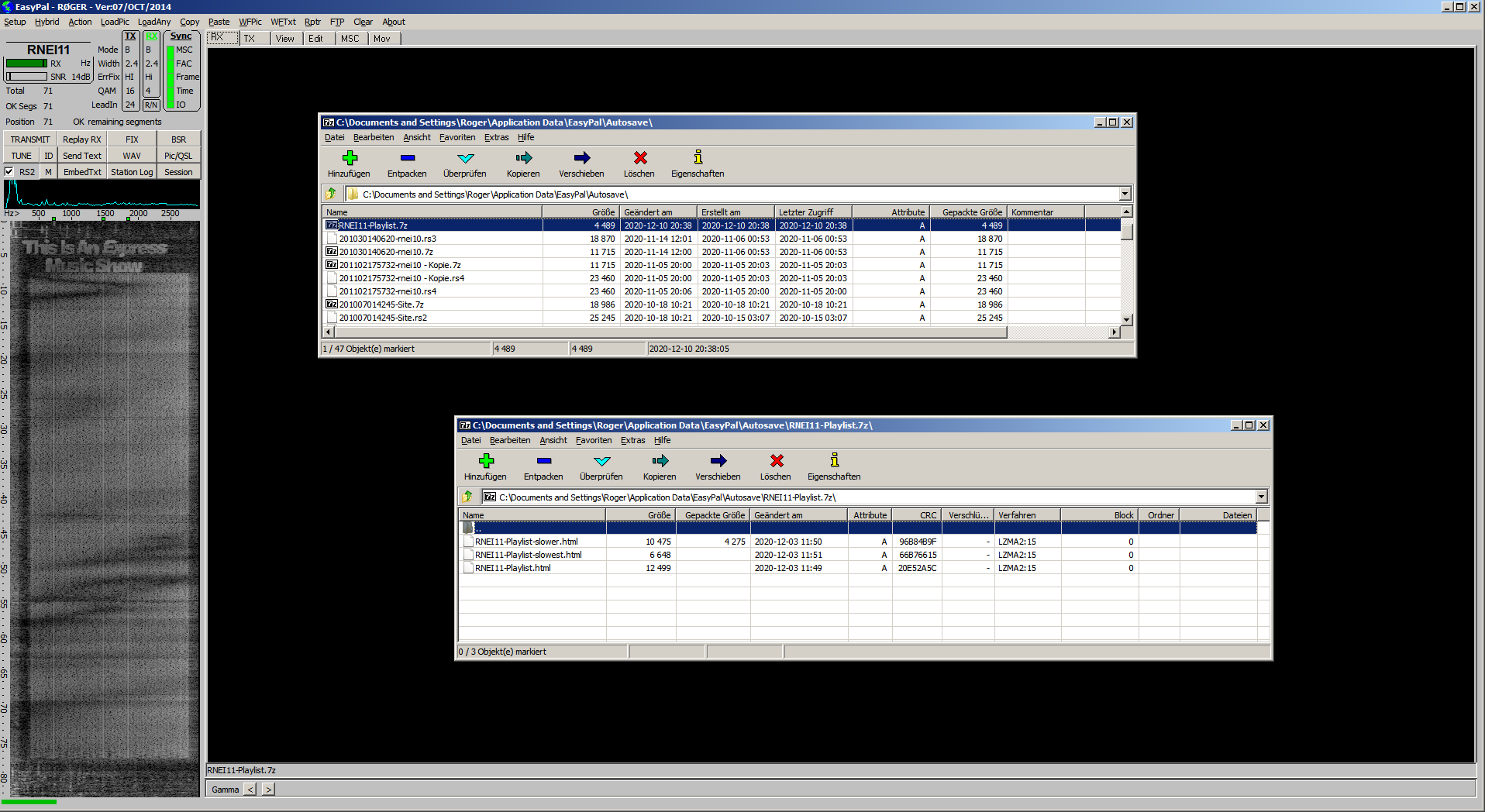
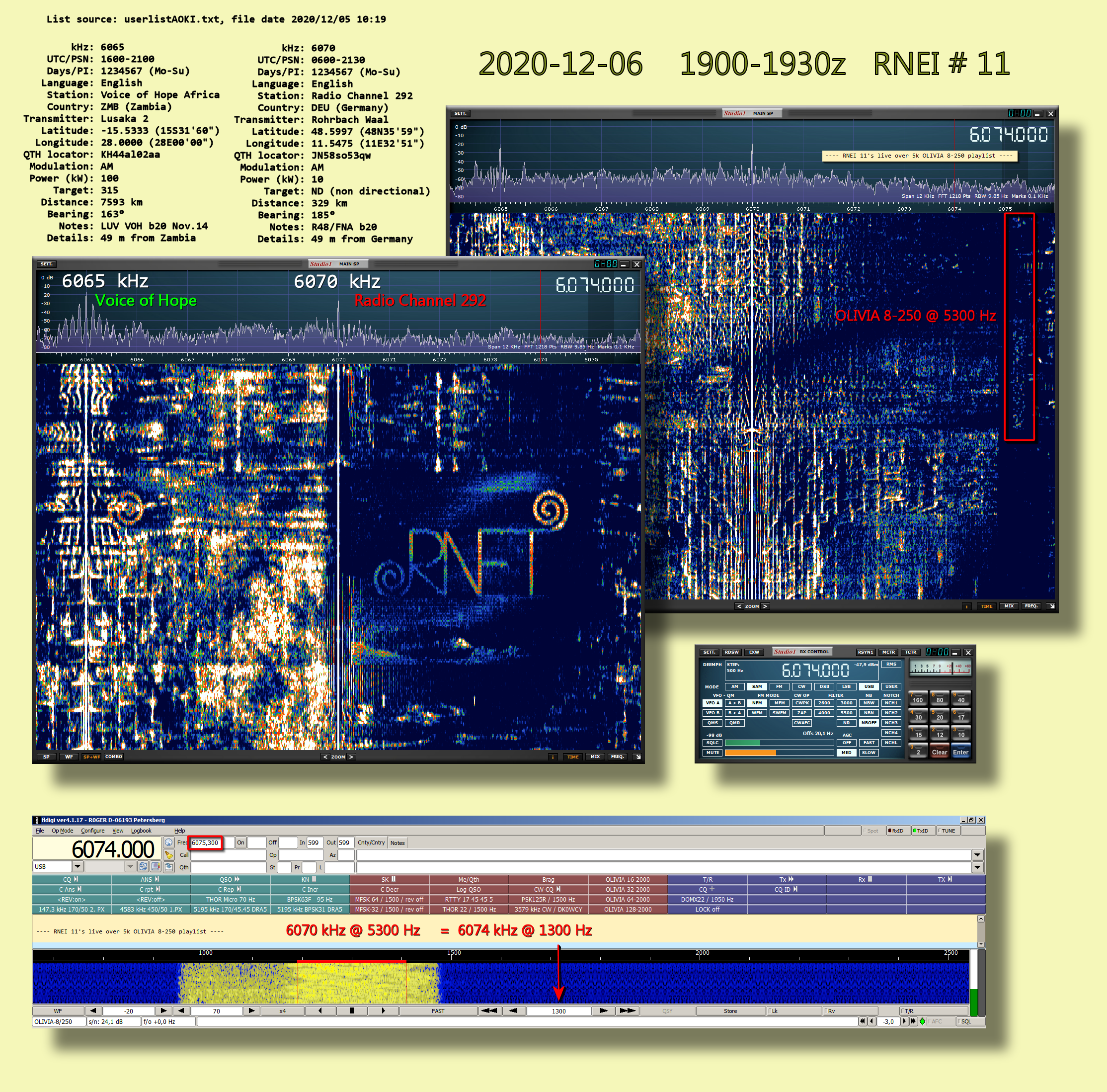
https://www.radioeins.de/programm/sendungen/medienmagazin/radio_news/beitraege/2015/ndr_kw.html
|
|
|
|
Nauen 6080
kHz 1900-2100z + 6145 kHz 2100-2300z
===> 250°
Atlantic - North |
|
|
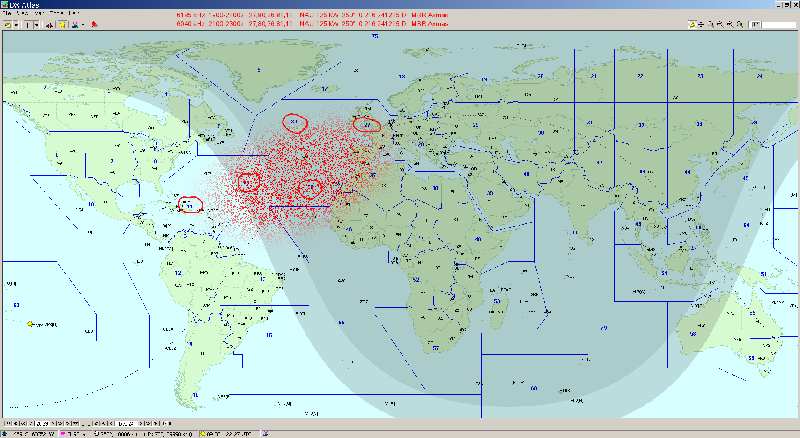 |
24.12.2019 = 24.12.2020
6030 kHz 1900-2100z
27,28,29
ERV 100 kW
305°
241219 ARM 2018: 6030 kHz 2017: 6010 kHz
6080 kHz 1900-2100z
27,80,36,81,11
NAU 125 kW
250°
241219 D 2018: 6080 kHz 2017:
6080 kHz
9740 kHz 1900-2100z
48,53,41,79
NAU 125 kW 130°
241219 D 2018: 9740 kHz 2017: 9740 kHz
9570 kHz 1900-2100z
41,49,54,79,58
MOS 100 kW 115°
241219 AUT 2018: 9570 kHz 2017: 9790 kHz
9800 kHz 1900-2100z
57,53,48,79
ISS 250 kW 148°
241219 F 2018: 9800 kHz 2017:
9800 kHz
11650 kHz 1900-2100z
13,46,15,66,52,57
ISS 250 kW 195°
241219 F 2018: 11650 kHz 2017:
11650 kHz
6145 kHz 2100-2300z
27,80,36,81,11
NAU 125 kW 250°
241219 D 2018: 6145 kHz 2017: 5930 kHz
6155 kHz 2100-2300z
27,28,29
ERV 100 kW 305°
241219 ARM 2018: 6155 kHz 2017: 6155 kHz
9590 kHz 2100-2300z
57,53,48,79
ISS 250 kW 148°
241219 F 2018: 9590 kHz 2017:
9590 kHz
9675 kHz 2100-2300z
41,49,54,79,58 MOS 100
kW 115°
241219 AUT 2018: 9650 kHz 2017: 9650 kHz
9740 kHz 2100-2300z
48,53,41,79
NAU 125 kW 130°
241219 D 2018: 9720 kHz 2017: 9765 kHz
9830 kHz 2100-2300z
13,46,15,66,52,57 ISS 250
kW 195°
241219 F 2018: 9830 kHz 2017:
9830 kHz
https://www.radioeins.de/programm/sendungen/medienmagazin/radio_news/beitraege/2015/ndr_kw.html |
|
|
|
|
|
|
|
Issoudun 11650 kHz 1900-2100z
+ 9830 kHz 2100-2300z
===> 195°
Atlantic -
South |
Issoudun 9800 kHz
1900-2100z + 9590
kHz 2100-2300z
===> 148°
Atlantic / Indian Ocean (South
Africa) |
|
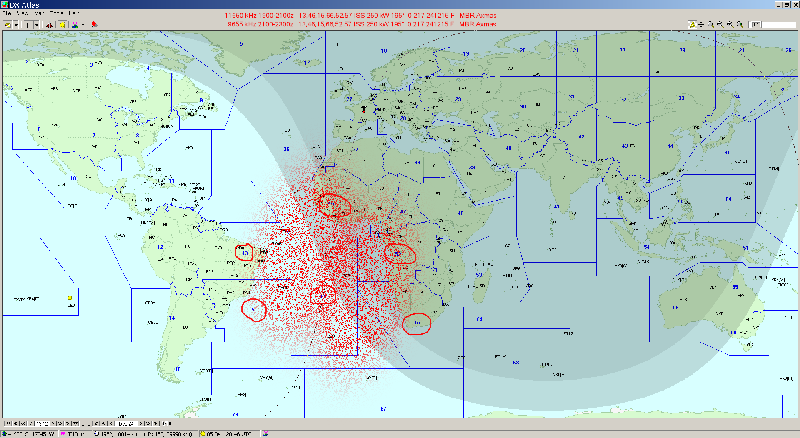 |
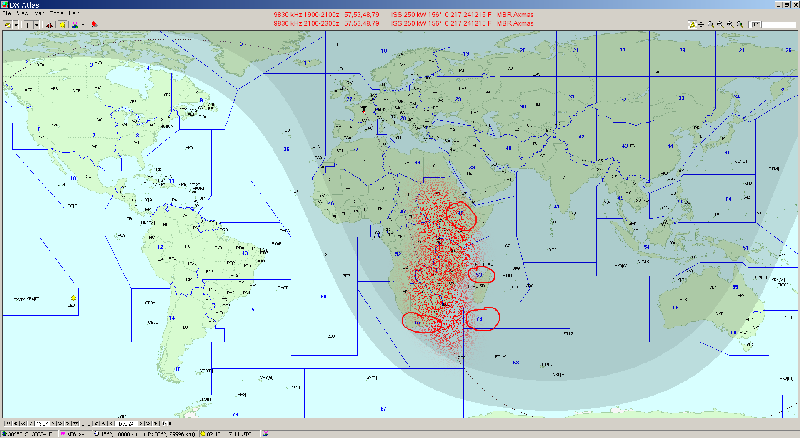 |
|
|
|
|
|
|
|
Nauen 9740 kHz 1900-2100z
+ 9740 kHz 2100-2300z
===> 130°
Indian Ocean - West |
Moosbrunn 9570 kHz 1900-2100z
+ 9675 kHz 2100-2300z
===>
115°
Indian Ocean - East |
|
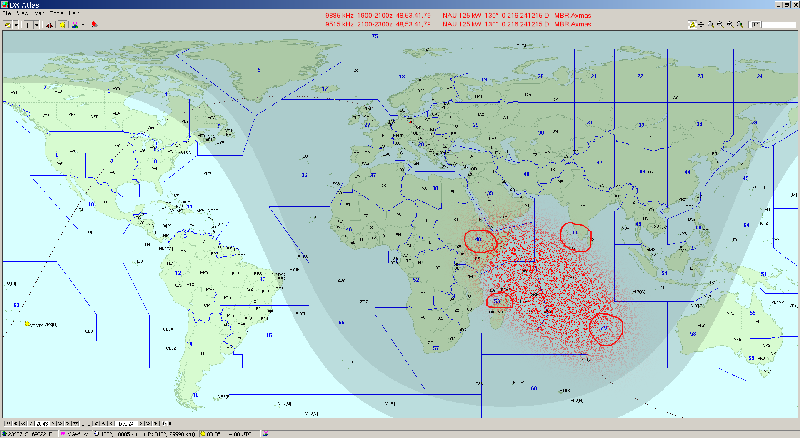 |
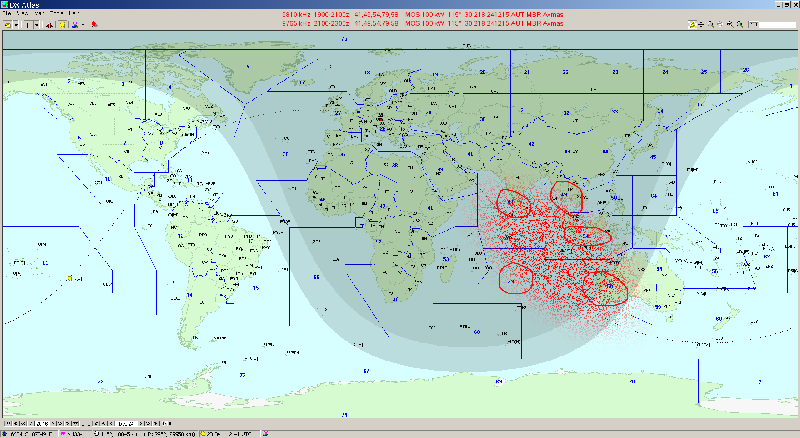 |
|
|
|
Noratus 6030 kHz 1900-2100z
Europe
+ 6155 kHz 2100-2300z
Europe + Parts of North America
===> 305°
|
|
|
























